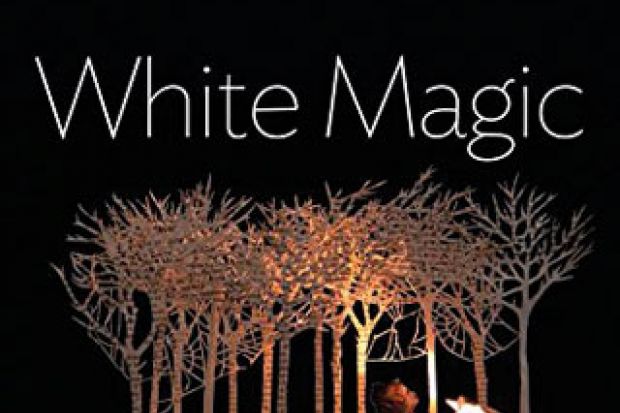We live in a digital age surrounded by bits, bytes and pixels. Books are no longer made solely of paper: they have been squashed – often uncomfortably – into plastic book-shaped gadgets with shiny screens we swipe. The letter has been lost to the speed and ease of email and texting. Meanwhile, my children return home excited about new purchases of old typewriters or 1960s record players and vinyl, and students record their lives digitally through washed-out 1970s-style colour filters and Polaroid-esque formats: the stuff of their parents’ childhoods. Digital and analogue are coexisting. Book design now shouts its physicality with uncut edges, extreme matt finishes, embossed cloth covers and beautifully printed endpapers.
Lothar Müller, inspired by Paul Valery’s 1932 thought experiment involving an industrious microbe reducing the world’s paper to dust, tells an alternative history of paper. He argues, convincingly, that paper has been, and continues to be, integral to our civilisation and the modern world. Through a carefully structured sequence of illuminating vignettes, he brings together fascinating facts from across the globe and the centuries to reveal the long-running and fundamental impact of paper on human life, work and culture.
The pace is fast as Müller takes us through thousands of years of change. He highlights technical developments in papermaking and the many forms paper has taken: from its journey from China via the Arab Empire, through Southern Spain and into Western Europe to watermarks and the fuelling of revolution; from banknotes and the 15th-century playing cards whose production consumed more paper than official documents, to the rise of paper mills; and the incorporation of paper into our language, where we “turn over a new leaf” and authors stare panic-stricken at a weisses Blatt (the symbolic white page). He also argues that the arrival of paper affected writing itself, offering a breathing space for writers, whose creative expression had previously been restricted on ever more cramped parchment manuscripts.
Given the comprehensive nature of the subject Müller covers in White Magic, I was delighted at the deft analysis and concise nature of the writing; there are only occasional forays into densely theoretical discussion. His focus on “what modern European literature knows about the material from which it is made” involves a whistle-stop tour of all the great, good and some unknowns of the literary world. He manages it beautifully, weaving wide-ranging sources together to tease out the persistent influence of paper in terms of narrative and imagery. I particularly enjoyed his accounts of 19th-century Parisian chefs wearing printed aprons made of wastepaper, the mocking of the growing 19th-century literary market and a fascinating discussion of the meaning of colour in paper use in everything from death sentences to royal invitations.
But Müller’s main task is to shift discussion of the impact of digital technology, media and communications on the early 21st century, away from the origins of printing to the far earlier technical development of paper more than 2,000 years ago. His project is to reposition us into a long-running and – he argues – continuing “Paper Age”, parking the “Gutenberg Era” within historical constraints. He challenges and unpicks Marshall McLuhan’s insistence on the centrality of the printing press in media theory and its use as a model in teaching us how to organise “all other activities on a systematic lineal basis”.
Jacques Derrida felt that paper might experience a certain amount of “retreat” from its central position, and Müller goes further, declaring that there is little prospect of the death of paper given that “we are hybrids and so are our media…The Paper Age is not yet finished.” While this is comforting to those of us who enjoy our paper, book and stationery fetishes, what does it mean for innovation in the development of content across digital platforms? Will the place that paper has in our hearts, minds and memories constrain us in any move to non-linear forms of publication?
White Magic: The Age of Paper
By Lothar Müller, translated by Jessica Spengler
Polity, 352pp, £20.00
ISBN 9780745672533
Published 28 November 2014





